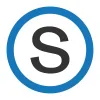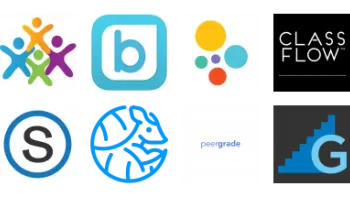Take a look inside 9 images
Schoology
Pros: Many features and integrations in one central location. Enough variety and flexibility to tailor instruction to the needs and curriculum of just about any teacher.
Cons: Lacks some functionality; can be disorganized; has limited analytics. First-time users may find the platform overwhelming at first and may want to stick to basic features until they learn more in-depth.
Bottom Line: With patience and creativity, it can evolve into a rich learning management system.
Schoology offers a wide range of features and possibilities, so teachers should take their time to learn about how to use the tool by taking advantage of the multimedia support resources on the PowerSchool website. At this time, many glitches within the features make the site and app difficult to use at scale -- for example, notifications not operating correctly when the appropriate settings are selected.
If you can overlook the functionality issues, you can start out with a Sandbox practice course to build a personal resource library that may include videos, PDFs, links to informational texts, practice assessments, and homework help discussions. Transfer content to your students' courses to engage them in rigorous tasks, assessments, and discussions using teacher-designed and -uploaded assignments. Teachers have the ability to assess student work and provide feedback directly to students and, if desired, allow students to resubmit assignments that demonstrate growth.
Schoology's integration with Google and Microsoft opens doors for creating a more engaging curriculum that fits with tools teachers already use. Google Slides or Docs can quickly be attached or embedded into a course. Schoology even creates a unique copy for each individual as they open the assignment link. Additionally, the site contains options for Learning Tools Interoperability (LTI) integration with hundreds of educational tools, including Nearpod, EdPuzzle, Kami, and many others.
Teachers can boost a connection between school and the home by creating a parent or grade-level group and posting class activities and school announcements there. Teachers and school administrators can also store important support or professional development resources in group folders. Although there's a lot to learn, teachers and administrators will likely find that using Schoology increases efficiency and enables students and families to take an active role in the educational journey.
Schoology is a web-based learning management system (LMS) that allows teachers to create and assign both traditional and creative tasks. Some of the most often used features include assignment creation and submission, the grade book, links to outside content, PDF markup, student progress reports, and messaging. Schoology's Enterprise plan also includes features for IT staff to manage hundreds or even thousands of users as well as many courses. This includes integration with PowerSchool, Schoology's parent company, which can sync courses, sections, and users as needed.
The platform supports a variety of learning tasks, such as links to course readings, embedded videos, and discussion posts that will engage students in productive conversations. There are also many ways for students to demonstrate learning, like completing quiz or assessment questions, uploading images or audio, or uploading project files.
Teachers can organize course materials in folders, but this can quickly become difficult for students to navigate to keep track of due dates and notifications as more courses are added. Creating assessments and tracking student progress is fairly straightforward, but functionality can feel clunky at times due to the inability to pull reports for missed assignments, or temporary glitches in features.
Still, it can be useful, allowing teachers flexibility in grade setup, grading groups, standards alignment, manual or automatic grading options, and rubrics for detailed feedback. Schoology provides 18 assessment question types, including audio or video uploading as well as highlighting and labeling images.
Teachers from across grade levels and curricula may find Schoology useful thanks to its many features and customizability, especially for designing tasks and assessments. It can be used for skill extension, content scaffolding, and time management, especially for more tech-savvy secondary students who can better navigate the interface. There's no shortage of options to customize the learning environment and differentiate for individual student needs, including tons of different assessment types, from typical question formats to media contribution.
Teachers upload audio or video directions for assignments or assessment questions, and younger students or students who have identified needs can record their responses as well. Teachers can provide quick feedback and communication to students and families and can keep track of student progress using badges, a grade book, email or app notifications, and workload monitoring. However, all of this isn't necessarily apparent when you first start using the tool, and it does not always function smoothly.
Teachers will need to take quite a bit of time to sort through the support materials, play around, and build up their digital classroom piece by piece. However, with thoughtful, gradual implementation and consistent use, teachers and students will be able to upload, create, collaborate, and check progress.


















